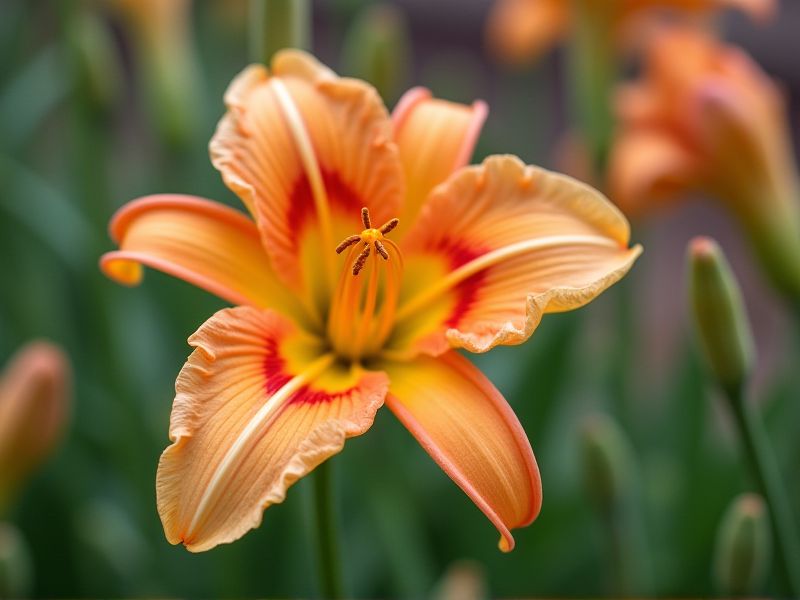
Cold-hardy plants that bloom early are essential for gardeners looking to add color to their landscapes in the spring. For instance, hellebores, commonly known as Lenten roses, thrive in colder temperatures and can start flowering as early as February. Another popular option is the snowdrop, which features delicate white flowers that often peek through the snow, signaling the end of winter. Crocuses, with their vibrant colors, also emerge early, providing a cheerful sight in gardens. By incorporating these resilient species, you can enjoy a lively garden even when frost is still a possibility.
List of some Cold-hardy plants that bloom early
- Snowdrop (Galanthus nivalis)
- Crocus (Crocus spp.)
- Winter Aconite (Eranthis hyemalis)
- Hellebore (Helleborus spp.)
- Forsythia (Forsythia spp.)
- Witch Hazel (Hamamelis spp.)
- Siberian Squill (Scilla siberica)
- Glory of the Snow (Chionodoxa forbesii)
- Lungwort (Pulmonaria spp.)
- Pansy (Viola tricolor)
Important things about Cold-hardy plants that bloom early
Climate Adaptability
Cold-hardy plants that bloom early are essential for enhancing garden aesthetics while withstanding harsh winters. These resilient species, such as Hellebores, Crocuses, and Snowdrops, can thrive in temperatures as low as -30degF, making them perfect for colder climates. Early bloomers not only provide vital nectar for pollinators emerging in Spring but also help create visual interest in your garden before most plants have started their growth cycle. By incorporating cold-hardy varieties, you can ensure that your outdoor space is vibrant and welcoming even during the chillier months.
Types Of Cold-Hardy Plants
Cold-hardy plants that bloom early include varieties such as hellebores, crocuses, and snowdrops, which often start flowering even while snow is still present in your garden. These resilient plants thrive in USDA zones 3-7, making them ideal for regions with harsh winters. Hellebores, known for their unique cup-shaped flowers, come in various colors, providing a stunning visual contrast against the snowy landscape. Choosing early-blooming, cold-hardy plants not only brightens your garden but also supports pollinators emerging during early spring.
Blooming Seasons
Cold-hardy plants such as Hellebores, Crocuses, and Snowdrops thrive in early spring, often pushing through the remnants of winter snow. These resilient flora not only add vibrant color to your garden but also provide essential nectar for pollinators emerging from hibernation. By selecting varieties like the perennial Pansy or the versatile Primrose, you can create a cheerful landscape even in chillier climates. Incorporating these sturdy blooms ensures that your garden remains lively and attractive, showcasing nature's endurance.
Soil Requirements
Cold-hardy plants that bloom early thrive best in well-draining, loamy soil enriched with organic matter, which promotes healthy root development and nutrient uptake. These plants often prefer slightly acidic to neutral pH levels, typically ranging from 6.0 to 7.0, allowing them to absorb essential minerals efficiently. Incorporating compost or mulch can help retain moisture while providing vital nutrients, supporting vigorous growth during the early spring bloom. For optimal results, ensure your planting location receives sufficient sunlight and is sheltered from harsh winds to protect delicate blossoms.
Sunlight Exposure
Cold-hardy plants that bloom early thrive in full sunlight, making them ideal for gardens in colder climates. Varieties such as Crocus, Snowdrop, and Hellebore are known for their resilience, often emerging from the ground even while snow still lingers. Adequate sunlight not only stimulates their growth but also enhances their vibrant colors, attracting early pollinators to your garden. Ensuring these plants receive at least six hours of direct sunlight daily will promote healthy blooms and robust development.
Watering Needs
Cold-hardy plants that bloom early, such as snowdrops and crocuses, require careful watering to thrive in cooler temperatures. These plants typically need moist but well-drained soil, allowing excess water to escape, preventing root rot. To maintain optimal hydration, water early in the morning, especially in the spring when temperatures start to rise. By observing soil moisture levels, you can determine the right watering frequency, ensuring your early bloomers remain healthy and vibrant.
Pest Resistance
Cold-hardy plants that bloom early, such as Helleborus and Crocus, exhibit remarkable pest resistance, making them ideal for gardeners in challenging climates. These plants thrive in colder temperatures, allowing them to establish early growth and reduce vulnerability to common pests like aphids and spider mites. Furthermore, their natural adaptations often include thicker foliage and chemical defenses that deter herbivores, promoting a healthier garden ecosystem. By choosing cold-hardy varieties, you can enjoy vibrant blooms while minimizing the need for chemical pest control methods.
Maintenance Practices
Cold-hardy plants that bloom early, such as crocuses and snowdrops, require specific maintenance practices to thrive in colder climates. Regularly checking the soil for adequate drainage is crucial, as these plants are susceptible to rot if overly saturated. Mulching not only regulates soil temperature but also protects the root systems from harsh winter conditions. In spring, you should remove any dead foliage to promote healthy growth and blooming in your vibrant early garden.
Overwintering Techniques
Cold-hardy plants, such as hellebores and winter aconites, are ideal for early spring blooms and can thrive even in harsh winter conditions. To ensure their survival during frosty months, mulch is essential; it insulates the soil, protecting roots from extreme temperature fluctuations. Another effective overwintering technique involves planting these perennials in well-draining soil to prevent root rot while maintaining moisture levels. You can also consider using row covers or garden fabric to shield your blooms from severe winter weather, allowing them to flourish as soon as the warmer days return.
Companion Planting Options
Cold-hardy plants that bloom early, such as pansies, primroses, and hellebores, can enhance your garden's aesthetics while thriving in cooler temperatures. Including these plants can also promote beneficial relationships with nearby crops, improving nutrient uptake and pest resistance. For example, planting pansies alongside kale can deter aphids and enhance the visual appeal of your vegetable garden. Selecting these hardy bloomers not only extends your garden's flowering season but also supports a healthier ecosystem overall.
